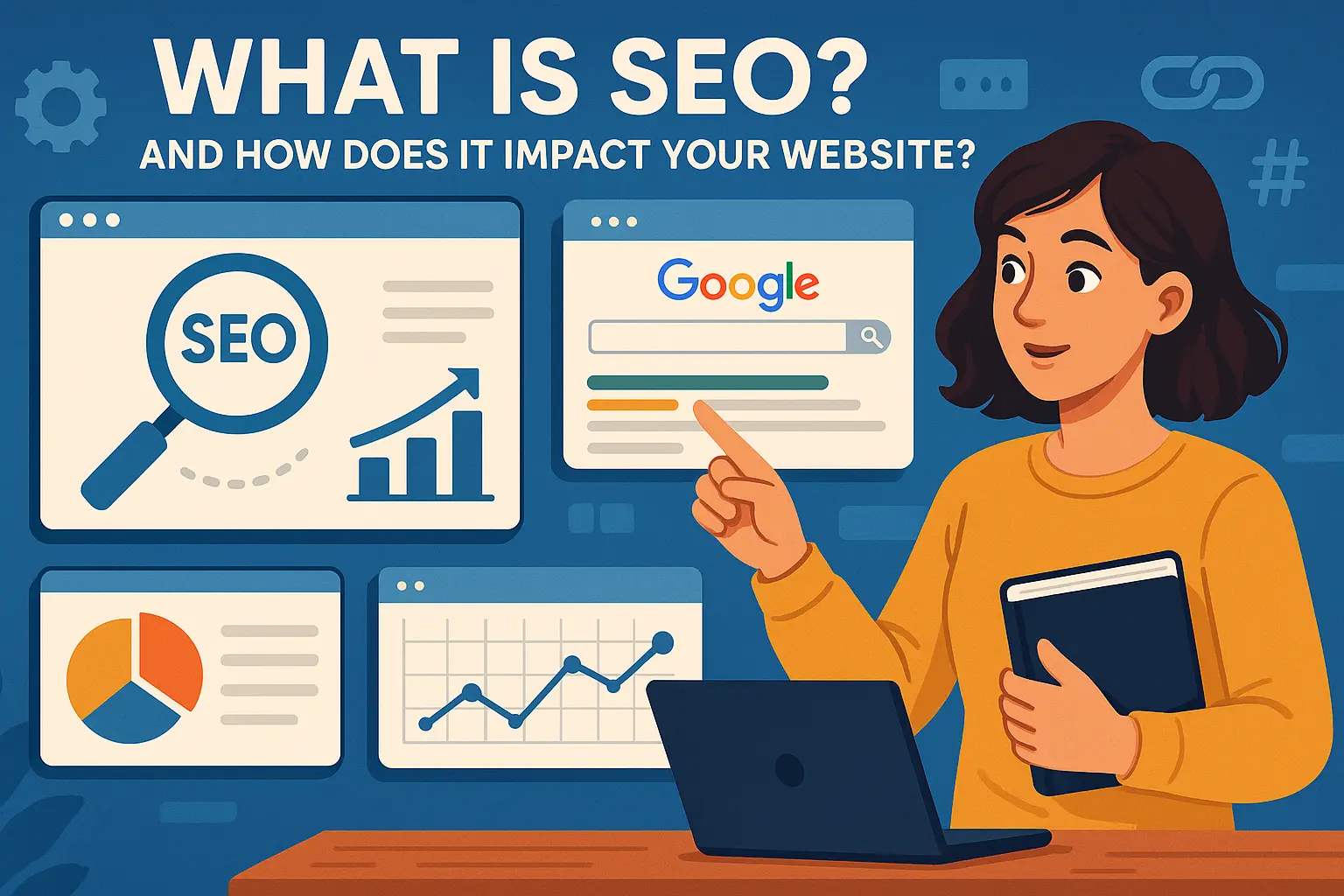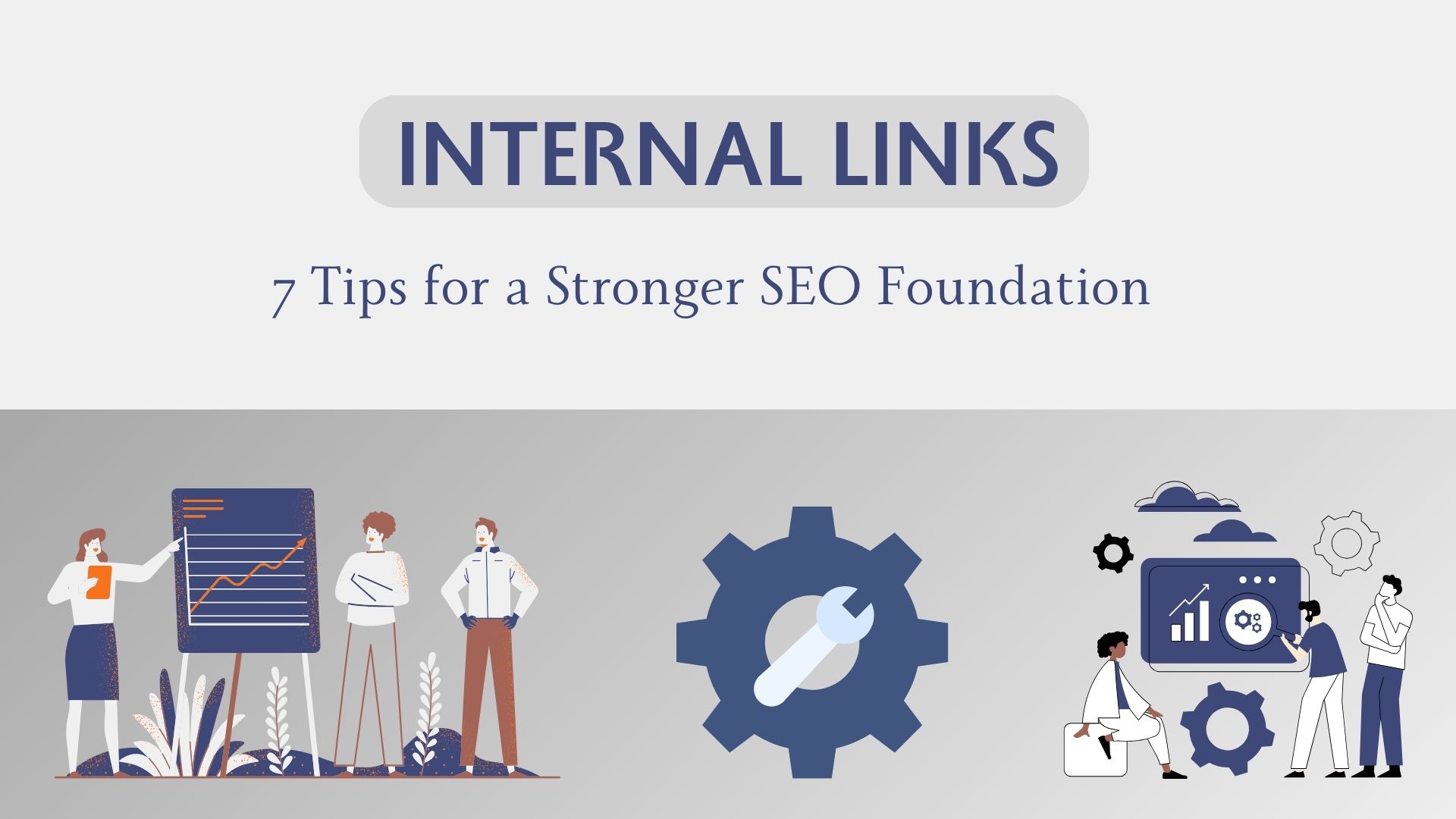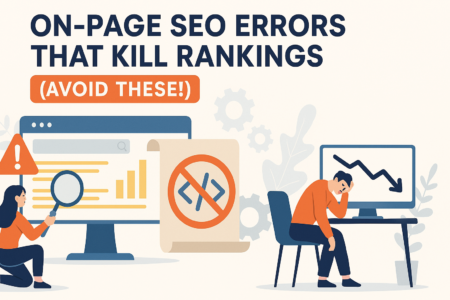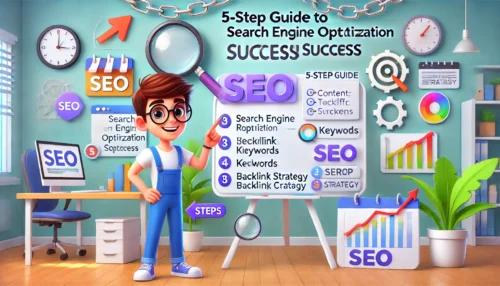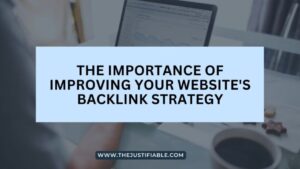Table of Contents
SEO meaning is often tossed around in digital marketing, but do you really understand what it is and how it shapes your website’s success? Think about it: Why do some sites always show up on Google’s first page while others get buried? The answer lies in how well they use SEO.
In this guide, I’ll break down what SEO actually means, why it matters, and the specific ways it can transform your website’s visibility, traffic, and growth.
What Is The True SEO Meaning For Websites?
Search engine optimization, or SEO meaning in its simplest form, is the practice of making your website more visible and more appealing to search engines like Google.
But here’s the thing: SEO isn’t just about algorithms and technical tweaks. At its heart, it’s about making your site useful, trustworthy, and easy to find for real people.
If you’ve ever wondered why your competitor’s site shows up before yours in Google results, it’s usually because they’re using SEO better.
Defining Search Engine Optimization In Simple Terms
Let me break it down: When someone types a question into Google, the search engine has one job — find the best, most relevant answer as quickly as possible. SEO is the process of structuring your website so that Google sees your content as that best answer.
Think of it like this:
- Keywords act like signposts, telling search engines what your content is about.
- Page speed, mobile-friendliness, and clean design are like a well-lit storefront that makes visitors want to come inside.
- Links pointing to your site are like recommendations from trusted friends.
You don’t have to be a tech genius to get the basics right. Even simple steps like writing clear titles, using descriptive headings, and making sure your site loads fast can make a huge difference.
Why Search Engines Rely On SEO To Rank Content
Search engines can’t read websites the way humans do. They rely on clues — words, structure, and links — to decide which pages should appear first. SEO provides those clues.
Here’s how it works in practice:
- A search engine crawler scans your website, like a librarian flipping through a new book.
- It indexes your content, storing details about your pages in its database.
- When someone searches, the algorithm quickly decides which “books” (webpages) to pull off the shelf.
If your site has well-structured content, clear keywords, and signals of trust (like backlinks), you have a much higher chance of being picked for that first-page shelf.
Without SEO, even the best content risks being invisible. Imagine writing a brilliant novel but never putting it in a library — no one would ever discover it.
How SEO Balances User Experience And Algorithms
Here’s where people often get confused: SEO isn’t about gaming the system; it’s about balance. If you focus only on keywords and ignore the human reader, your site feels robotic. If you focus only on flashy design without considering search engines, no one finds you.
Smart SEO does both:
- For people: Clear navigation, valuable content, fast loading times, and mobile responsiveness.
- For search engines: Proper use of keywords, metadata, structured headings, and crawlable links.
Think of SEO as building a bridge between you and your audience. One side is the algorithm, the other side is the human. A strong SEO strategy makes sure both sides can meet in the middle.
Pro insight: I’ve found that whenever I write with a reader in mind first and then fine-tune with SEO basics (titles, alt text, headings), rankings tend to improve naturally without overthinking it.
How SEO Works To Improve Online Visibility
Now that you know the meaning of SEO, let’s talk about the magic part: how it actually puts your website in front of people searching. Visibility in search results is everything.
If you’re buried on page three, you may as well not exist. SEO helps pull your site up to where the clicks happen.
The Role Of Keywords In Matching User Intent
Keywords are the starting point of SEO. They’re not just random words — they represent what people are actually looking for. For example, if someone searches “best running shoes for flat feet,” Google wants to serve results that directly answer that phrase, not just any page about shoes.
Your job is to figure out what your audience types into the search bar and then use those words naturally in your content. Tools like Google Keyword Planner or even just watching autocomplete suggestions can give you insights.
But here’s the real trick: don’t just chase high-volume keywords. Instead, focus on intent. Someone searching “buy red Nike sneakers size 10” is closer to making a purchase than someone typing “sneakers.”
By aligning your content with intent-driven keywords, you’re meeting users where they actually are in their journey.
Why Quality Content Drives Higher Search Rankings
Google’s mission is simple: deliver the best answer. That’s why quality content always wins in the long run. I’m not talking about cramming a blog post with keywords — I mean creating genuinely helpful, detailed, and engaging content.
Quality looks like this:
- Articles that actually solve a problem rather than skim the surface.
- Step-by-step guides that include examples and clear instructions.
- Fresh content that reflects current trends and data.
I’ve seen thin, keyword-heavy content get quick wins but lose ground fast. On the flip side, a well-written guide with clear explanations often builds steady traffic for years.
Search engines notice how users interact with your content — if people stay, scroll, and share, that’s a green light for higher rankings.
How Backlinks Signal Authority To Google
Backlinks are like the internet’s version of word-of-mouth recommendations. When another reputable site links to yours, it tells Google, “This page is trustworthy.” The more quality backlinks you earn, the more authority your site gains.
But not all backlinks are created equal:
- A link from a respected site in your niche is worth far more than dozens from random blogs.
- Earning backlinks naturally (through useful content) is more sustainable than buying them.
- Context matters — a link inside a relevant article has more weight than one in a random sidebar.
Here’s a quick example: If you run a travel blog and Lonely Planet links to one of your guides, that’s a massive authority boost. Google sees that trusted sites vouch for you, which makes it more likely to rank your pages higher.
Pro tip: Instead of chasing backlinks for the sake of it, focus on creating shareable resources like detailed guides, data-driven studies, or unique tools. People love linking to something genuinely useful.
The Different Types Of SEO And Their Functions
SEO isn’t one-size-fits-all. It’s actually a mix of different practices working together to make your website stronger in search results.
Each type of SEO plays a specific role, and when you combine them, your site becomes easier to find, more trustworthy, and more user-friendly.
On-Page SEO: Optimizing What’s On Your Website
On-page SEO is everything you do within your website to make it clear, relevant, and easy to use. Think of it like decorating your storefront so people know exactly what you sell and feel comfortable walking in.
Some of the most impactful on-page SEO actions include:
- Writing clear, keyword-rich page titles (e.g., “Affordable Web Hosting Plans for Small Businesses”).
- Structuring your content with headings (H1, H2, H3) so readers and search engines can follow your flow.
- Adding internal links between pages to guide visitors deeper into your site.
- Using descriptive alt text for images so Google knows what’s in your visuals.
Practical tip: In WordPress, when you create a blog post, look for the “Squirrly” or “Rank Math” plugin box at the bottom of the editor. It lets you add a focus keyword, meta description, and even shows a preview of how your page will look in Google results.
Off-Page SEO: Building Authority Beyond Your Site
If on-page SEO is how you dress your store, off-page SEO is your reputation in the neighborhood. It’s about how other sites, people, and platforms talk about and link back to you.
The main player here is backlinks — links from other websites to yours. Search engines see these as votes of confidence. But off-page SEO goes beyond that:
- Guest posting on relevant blogs to get exposure and links.
- Being active on platforms like LinkedIn or Quora to position yourself as an authority.
- Earning mentions from trusted websites or directories.
Personal advice: I’ve found it’s better to build 5 high-quality backlinks from respected sites in your niche than 50 random ones. One link from an industry leader can move the needle more than dozens of weak links.
Technical SEO: Improving Site Performance And Speed
Technical SEO is the behind-the-scenes stuff. Visitors might not notice it directly, but they definitely feel the effects. If your site is slow, broken, or confusing for search engines to crawl, you’re at a disadvantage.
Key technical areas include:
- Fast loading times (aim for under 3 seconds).
- A mobile-friendly design that adapts to all devices.
- An XML sitemap that guides search engine crawlers.
- HTTPS security for safe browsing.
Quick fix: Use free tools like Google PageSpeed Insights. Enter your URL, and it shows exactly what’s slowing your site down — from large images to unused code. Fixing just one or two red flags here can instantly improve rankings.
Local SEO: Reaching Customers In Your Area
If you run a local business, local SEO is a game-changer. It makes sure your business shows up when someone nearby searches “coffee shop near me” or “best plumber in Dallas.”
Here’s what to focus on:
- Set up and optimize your Google Business Profile with accurate details.
- Collect reviews from real customers — they directly influence visibility.
- Use local keywords naturally (e.g., “affordable web design in Austin”).
- Make sure your name, address, and phone number (NAP) are consistent everywhere online.
Example: If you’re a dentist, showing up in Google Maps with 4.9 stars and 50 reviews will bring in more foot traffic than being buried under general dental blogs.
Why SEO Is Essential For Website Growth
SEO isn’t just about ranking high in Google. It’s about building sustainable growth for your website without having to constantly pour money into ads.
When done right, SEO becomes the foundation of your online presence.
How SEO Increases Organic Traffic Without Ads
Paid ads can bring quick traffic, but the moment you stop paying, the clicks vanish. SEO, on the other hand, creates a steady stream of organic visitors. Once your page ranks, it can continue attracting traffic day and night, without additional spend.
To put it simply:
- Ads = renting space.
- SEO = owning the land.
Practical example: If your blog ranks for “best project management tools,” you could be getting thousands of visitors every month, all for free. That traffic compounds over time as more people discover your content.
Building Long-Term Credibility And Trust Online
Users trust organic results more than ads. Think about your own habits: do you usually click the top ad, or the first organic result that looks like a solid answer? For most people, it’s the latter.
SEO helps you build that trust by:
- Consistently providing valuable, accurate content.
- Earning links from authoritative websites.
- Showing up regularly in searches, which builds recognition.
In my experience, when a site keeps popping up across different queries, it feels like an authority, even if I didn’t know the brand before. That repeated exposure plants seeds of trust.
The Impact Of SEO On Conversions And Sales
Traffic is nice, but conversions are what really matter. The beauty of SEO is that it brings in users who are actively searching for solutions. These aren’t random visitors — they’re warm leads.
Here’s how SEO supports sales:
- Targeted keywords attract people ready to buy (e.g., “best hosting plan for WordPress blogs”).
- Optimized product pages with clear calls-to-action convert visitors into customers.
- Blog content can nurture leads, answering questions before they make a purchase.
For example, I’ve seen small e-commerce shops double their sales simply by optimizing their product descriptions and adding FAQ sections targeting common search questions. The right words in the right place make all the difference.
Pro tip: Combine SEO with conversion tracking tools like Google Analytics. From the dashboard, go to Conversions > Goals > Create New Goal. Set a goal like “Completed Purchase” or “Signed Up for Newsletter,” and you’ll see exactly how much revenue your SEO-driven traffic is bringing in.
Key SEO Ranking Factors You Should Understand
Search engines like Google use hundreds of signals to decide where your website should appear in search results. The good news is you don’t need to master every single one.
If you understand the core ranking factors and focus on them consistently, you’ll already be ahead of most websites.
Content Relevance And User Intent Matching
Content is still the backbone of SEO. But it’s not enough to simply write articles with keywords sprinkled in. Google wants to match search results to user intent — the real reason someone typed a query.
For example:
- Someone searching “what is SEO meaning” likely wants a clear definition.
- Someone searching “SEO services near me” is ready to hire.
- Someone searching “best free SEO tools” is exploring options.
If your page doesn’t align with the intent behind the keyword, it won’t rank well.
Here’s a simple way I handle this: before writing, I type the keyword into Google and look at the top results. Are they guides? Product pages? Lists? That gives you a clear picture of what kind of content Google thinks matches intent.
Quick tip: Don’t just copy the top results. Aim to cover the same intent but add more depth, examples, or clarity that others missed. That’s how you stand out.
Mobile-Friendly Websites And Page Experience
We live in a mobile-first world. More than half of global web traffic comes from mobile devices, and Google has switched to mobile-first indexing. That means if your site looks bad or loads poorly on a phone, you’re going to struggle in rankings.
Here’s what “mobile-friendly” really means:
- Text is easy to read without zooming.
- Buttons are large enough to tap without fat fingers missing them.
- Layout adapts smoothly to different screen sizes.
If you’re using WordPress, most modern themes are mobile responsive. But don’t assume — test your site. From your Google Search Console dashboard, go to “Mobile Usability” and see if Google has flagged any issues.
Site Speed And Core Web Vitals Performance
Nobody likes a slow website. Google knows this, which is why speed and Core Web Vitals (its performance metrics) are key ranking factors.
The three main Core Web Vitals are:
- Largest Contentful Paint (LCP): How quickly the main content loads.
- First Input Delay (FID): How fast your site reacts when someone clicks.
- Cumulative Layout Shift (CLS): Whether your content jumps around as it loads.
From experience, one of the biggest culprits of poor site speed is uncompressed images. I’ve seen sites cut their load times in half just by using tools like EWWW.io or enabling lazy loading in WordPress.
Secure Websites And HTTPS Protocol Importance
Security matters for both users and search engines. A site using HTTPS (the little padlock in the browser) is trusted more by Google than one using HTTP.
Switching is easier than most people think. Most hosting providers (like HostGator, Bluehost, or Hostinger) include free SSL certificates. You usually just need to enable it in your hosting dashboard.
I suggest making this a priority if you haven’t already. Not only is it a ranking factor, but visitors are far more likely to bounce if their browser warns them the site isn’t secure.
Common SEO Mistakes That Hurt Website Performance
Even with the best intentions, it’s easy to fall into traps that hold back your SEO. Some mistakes can be fixed quickly, while others can take months to recover from.
Let’s go through the biggest ones I see over and over.
Keyword Stuffing And Over-Optimization Risks
Once upon a time, stuffing a keyword into a page 20 times actually worked. Now it’s a fast track to poor rankings. Google’s smarter — it understands synonyms, related phrases, and context.
A bad example:
“Looking for SEO meaning? Our SEO meaning guide explains SEO meaning in detail.”
That feels robotic and unhelpful. A better approach is to use the main keyword naturally, sprinkle in variations like “search engine optimization” or “SEO definition,” and write like a human.
My advice: If your sentence sounds weird when you say it out loud, it’s probably over-optimized.
Ignoring Mobile Users And Responsive Design
This is a mistake that can sink a site. If someone opens your page on a phone and it looks broken, they’re gone. And once Google sees high bounce rates from mobile users, your rankings will drop.
I’ve seen this happen with websites using old themes that weren’t mobile-friendly. Switching to a modern responsive theme fixed the issue overnight. Always check your site on your own phone — if it frustrates you, it will frustrate visitors too.
Poor Content Quality And Thin Pages
Thin content is another silent killer. If your pages are only 200 words long and don’t really answer the question, they’ll be ignored.
Quality content means:
- Covering the topic in enough depth to satisfy the reader.
- Using real examples, tips, or data.
- Writing in a way that feels engaging, not rushed.
Think of it this way: would you bookmark your own article to come back later? If not, it’s probably too thin.
Neglecting Internal Linking And Site Structure
Internal links are one of the most underrated SEO tools. They guide both users and search engines to discover your best content. Without them, even your strongest pages might sit hidden.
Example: If you’ve written a detailed guide on “keyword research,” link to it from your blog posts about “SEO basics” or “content strategy.” This not only helps readers dive deeper but also tells Google that your keyword research guide is an important page.
From my own projects, I’ve noticed that adding 5–10 smart internal links to an old blog post can revive its rankings within weeks. It’s such a simple fix that many people overlook.
How To Get Started With SEO Step-By-Step
SEO can feel overwhelming if you try to tackle everything at once. The good news? You don’t need to master every detail on day one.
If you follow a clear step-by-step approach, you’ll build momentum and start seeing results without burning out.
Conducting Keyword Research With The Right Tools
Keywords are the foundation of SEO. Think of them as the questions your audience is asking. If you don’t know what they’re searching for, you’re writing blind.
Here’s a simple process I use:
- Brainstorm the topics your ideal customer cares about.
- Type those into Google and note the autocomplete suggestions.
- Use tools like Google Keyword Planner, Ubersuggest, or Ahrefs to dig deeper.
- Look for long-tail keywords — phrases like “best project management software for small teams.” These are easier to rank for and often bring higher-converting traffic.
Pro tip: If you’re using Ahrefs, go to Keywords Explorer > enter your main keyword > filter by “KD (Keyword Difficulty) under 20.” This helps you find low-competition terms worth targeting.
Writing Optimized Content That Still Feels Natural
Once you know your keywords, the next step is creating content around them — but don’t fall into the trap of writing for search engines instead of humans.
The balance looks like this:
- Use your target keyword in the title, meta description, and first paragraph.
- Add variations naturally in subheadings and body text.
- Answer the actual question the searcher is asking, in detail.
- Break up text with bullet points, images, or tables to make it easy to scan.
Whenever I write, I imagine sitting across from someone asking me that exact question. If my content doesn’t feel like a genuine, helpful answer, I know it needs more work.
Setting Up Analytics To Track SEO Progress
Without tracking, SEO feels like shooting in the dark. Tools like Google Analytics and Google Search Console are non-negotiable if you want to measure success.
Here’s how to start:
- In Google Analytics, go to Admin > Property > Data Streams to connect your website.
- In Search Console, add your site and submit your XML sitemap (most SEO plugins generate one automatically).
- Track metrics like organic traffic, average position, and click-through rates.
For conversions, I always set up goals. From your Analytics dashboard: Conversions > Goals > Create New Goal. Choose something meaningful like “newsletter sign-up” or “checkout completed.” This shows you not just who’s visiting, but who’s taking action.
Creating A Consistent SEO Strategy Over Time
SEO isn’t a quick fix. It’s more like going to the gym — results build up with consistent effort. Posting one optimized blog post won’t move mountains, but publishing regularly, building backlinks, and updating old content will.
A simple framework I recommend:
- Weekly: Publish or update one piece of content.
- Monthly: Build a few quality backlinks.
- Quarterly: Audit your site speed, technical health, and keyword performance.
The key is consistency. Even if you only improve your site a little each week, those small wins stack up. I’ve seen small businesses outrank big competitors simply because they kept at it while others gave up.
The Future Of SEO And Why It Keeps Evolving
SEO isn’t static. Google tweaks its algorithms thousands of times per year, and user behavior keeps changing. If you want long-term success, you need to understand where SEO is headed.
How AI And Machine Learning Affect Search Results
Google’s AI systems (like RankBrain and BERT) are designed to understand context, not just keywords. That means SEO is less about cramming in phrases and more about creating content that feels natural, detailed, and human.
I’ve noticed that conversational content — the kind that answers a question the way you’d explain it to a friend — tends to rank better now. AI is good at figuring out if your content really helps or if it’s just fluff.
This is why I suggest writing with clarity, examples, and real insights. AI rewards relevance, not tricks.
The Growing Role Of Voice Search Optimization
With Siri, Alexa, and Google Assistant everywhere, voice search is exploding. The way people search by voice is different from typing. Instead of typing “weather New York,” someone might say, “What’s the weather like in New York today?”
To optimize for voice search:
- Use conversational, question-based phrases in your content.
- Create FAQ sections that directly answer common questions.
- Keep answers concise — often under 30 words — since voice assistants prefer short responses.
If I were optimizing a recipe blog, for example, I’d include quick snippets like: “The best temperature to bake chocolate chip cookies is 350°F for 10–12 minutes.” That’s exactly the kind of answer a voice assistant pulls.
Why User Experience Will Dominate Future SEO
At the end of the day, SEO is moving more and more toward user experience. If your site loads fast, is easy to navigate, and actually satisfies the searcher’s needs, you’ll do well. If not, no amount of keyword tricks will save you.
Things to focus on for the future:
- Fast, mobile-friendly design.
- Clear site structure with logical menus.
- Interactive, engaging content that keeps people on your page.
I believe the sites that win long-term will be the ones that feel effortless to use. Google’s ultimate goal is to serve people, not algorithms — and your SEO should follow the same rule.
Expert Tips To Make SEO Work For Your Website
Before we wrap this guide, let me share some practical, battle-tested tips that can help you get more from your SEO efforts. These are things I’ve personally seen move the needle.
Focus On Search Intent Over Just Keywords
Keywords are important, but intent is everything. Ask yourself: is the person searching trying to learn, compare, or buy? Align your content with that.
For instance, an article titled “Best Laptops for College Students” should focus on comparisons and pros/cons, not just keyword repetition.
Keep Content Fresh And Regularly Updated
Old content can slowly lose rankings. I suggest revisiting your best-performing pages every 6–12 months. Update stats, add new examples, and expand weak sections. Google notices when content is fresh, and readers appreciate up-to-date info.
Invest In Building Quality Backlinks Naturally
Forget about buying hundreds of cheap links. Focus on earning a handful of high-quality backlinks. Practical ways I’ve used:
- Publishing original research or surveys that others want to cite.
- Creating detailed guides or tools that get shared naturally.
- Reaching out to bloggers or journalists with helpful resources.
One good link from an authority site can outweigh dozens of mediocre ones.
Combine SEO With Social Media For Better Reach
SEO and social media aren’t separate silos — they fuel each other. Sharing your content on LinkedIn, Twitter, or Facebook can spark the first wave of traffic and links that help it rank.
My workflow usually looks like this:
- Publish a blog post.
- Share it on social platforms with a personal story or tip.
- Engage with comments to keep the conversation going.
This gives your content an initial push, making it more likely to earn backlinks and visibility in search.
Pro tip: Don’t treat SEO like a one-off project. Treat it like gardening. Plant good seeds (keywords, content, links), water them regularly (updates and engagement), and let time do its work. The harvest might take months, but it’s always worth it.


